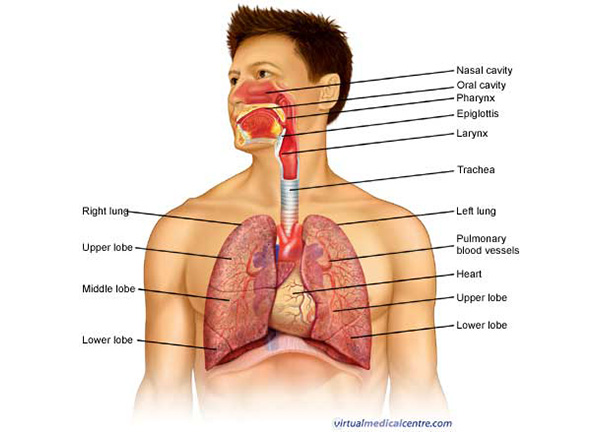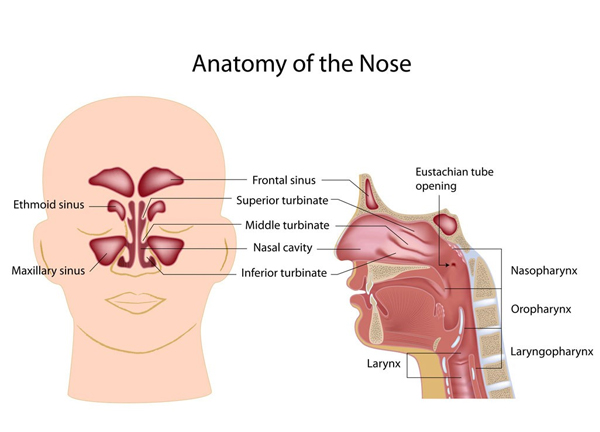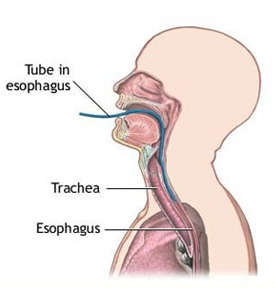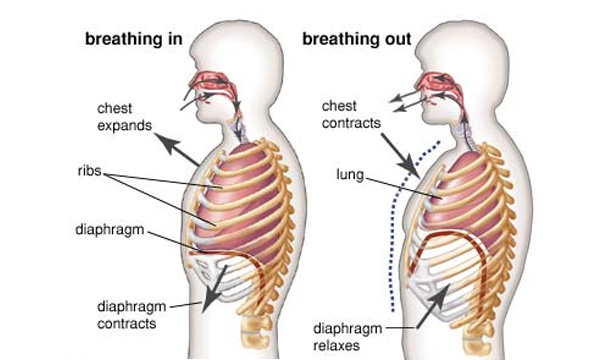Breathing is the process of taking air into the body (lungs) and removing air out of the body.
Breathing is also called gaseous exchange. Gases are moved or exchanged between the body and the atmosphere.

NB: Breathing is automatic.

The breathing system is made up of the following:
1. Nose
2. Trachea
3. Diaphragm
4. Bronchus
5. Lungs
This is the opening of the breathing system.

The nose has the following functions:
The trachea also called the windpipe. The trachea is the pipe that leads air from the nose into the lungs.
The trachea has tiny hairs called cilia inside it that move about to sweep out dust particles and mucus, which is then coughed out.
The trachea has C-shaped rings around it to ensure that it stays open all the time to avoid suffocation.

At its lowest end, it divides into two tubes ,bronchi (bronchus singular) each of which leads into one of the lungs.
The left bronchus enters the left lung while the right bronchus enters the right lung.
This is a small finger like membrane that prevents food from entering the windpipe during swallowing.

When we swallow, the epiglottis bends and covers the entrance to the windpipe.
These are the spongy and elastic organs located in the chest or rib cage.

Characteristics of lungs:
The alveoli holds the air. The alveoli are covered by blood vessels to allow for the movement of air into and out of blood. The blood releases its carbon dioxide into the air sacs.
In turn, oxygen enters into the blood from the air sacs. This means that the blood leaving the lungs and going back to the heart has less carbon dioxide but has a lot of oxygen.
It also means that the blood coming to the lungs from the heart has a lot of carbon dioxide and little oxygen.
The diaphragm is a curved (bow-shaped) muscle that separates the area around the lungs.

The diaphragm has the ability to contract and relax. When we breathe out, the diaphragm is at rest and is dome-shaped like a bow.
When we breathe in, the diaphragm contracts, loses its bow shape and becomes flat.
The ribs are the curved bones at the side of the chest.

They form the chest cavity or ribcage. Ribs protect the organs inside the ribcage.
When breathing in, the following things happen:
Both these occurrences increase the volume of the lungs. This forces the lungs to suck in air.
See the image below

This process is called inspiration or breathing in or inhalation.
The air sucked in has a:
Watch the video below to learn more:
When breathing out the following things happen:
Both occurrences decrease the volume of the lungs and so, air is forced out of the lungs through the nose, a process called expiration or exhalation or breathing out.
See the image below:

The expelled air has a:
Play the video below to learn more:
Watch this video on breathing system
| Gases |
Inspired air composition |
Expired air composition |
| Oxygen | 20.96% | 16.5% |
| Carbon dioxide | 0.03% | 4.5% |
| Nitrogen | 79.0% | 79.0% |
From the table we can see that oxygen is extracted from air breathed in while carbon dioxide is added to the air breathed out. The amount of nitrogen remains the same without increase or decrease.

Watch this video again